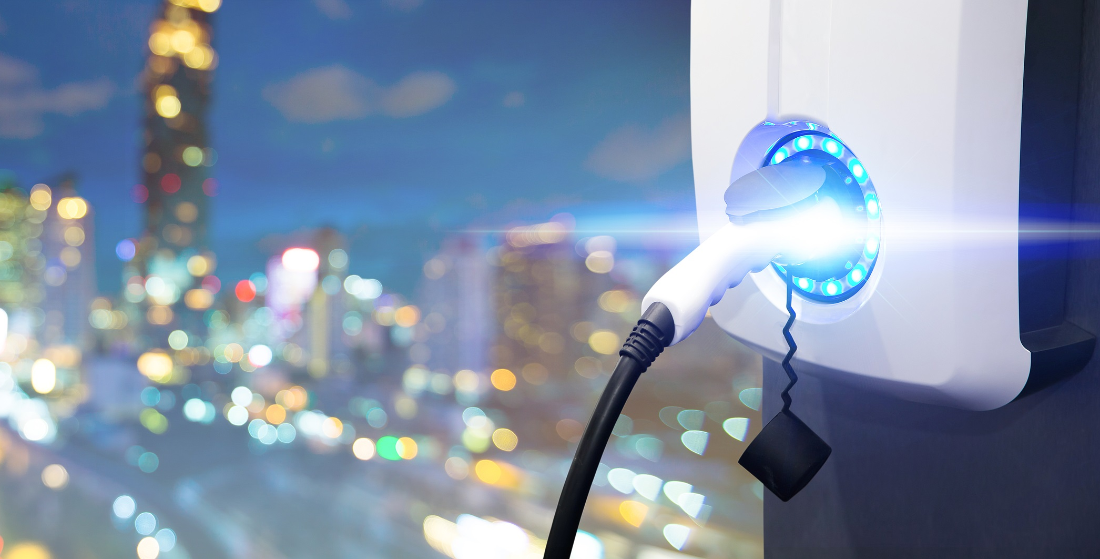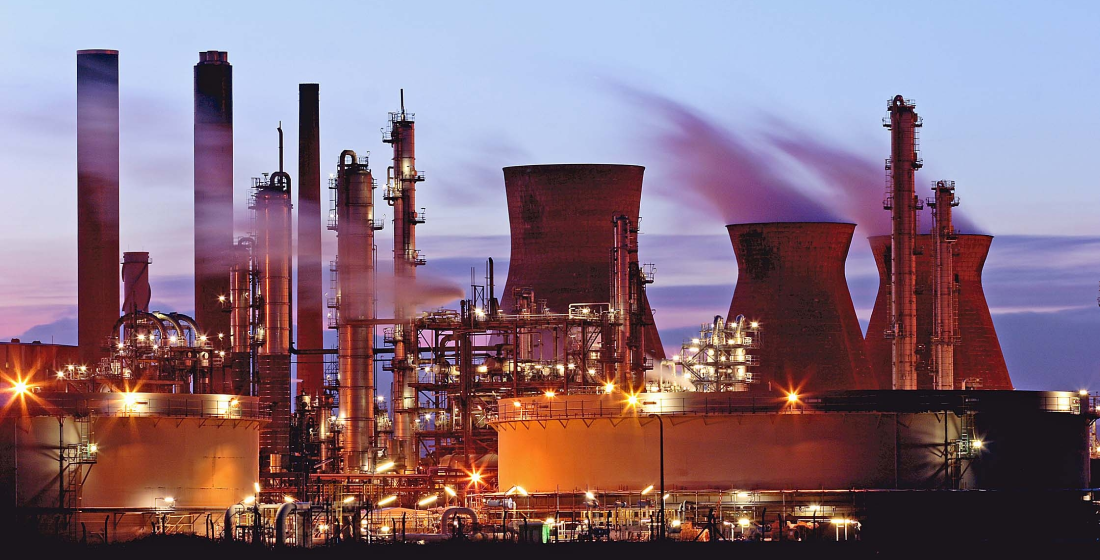EV gigafactories: Europe moves up a gear
Tesla has been running the show on so-called gigafactories for electric vehicles for some time. But now Europe with considerable support from DFIs and backing by ECAs for select projects is firmly in the race.

Gigafactory? What is it and where did the term come from? Possibly the prefix giga comes from the Greek word ‘gigas’ meaning giant. But it was back in 2013 when Elon Musk, CEO of electric vehicle manufacturer Tesla, first coined the term ‘gigafactory’ - giant factories.
Tesla’s first gigafactory, broke ground in 2014 in Nevada, and primarily develops lithium-ion batteries for Tesla electric vehicles (EVs). Located in Electric Avenue (seriously!), Reno, when fully completed it will probably be the largest building in the world with a footprint of 5.8 million sq ft. This is an area of more than 100 American football fields!
Tesla has had little trouble raising big capital even through the market roller coaster during the Covid pandemic. Of course, as I write this, the company has just lost a quarter or more of its share value as tech stocks currently face a massive correction. But the stock markets are currently so wacko that I’m not going to get drawn into that maelstrom discussion as this blog will focus on the industrial fundamentals and bigger, longer-term picture.
With Tesla having gigafactories in the US, China and another just started Berlin, Germany, real development across Europe can be seen to have lagged behind. (More on Telsa plans later.) EV gigafactory plans have been there in Europe for a while, but real impetus has now come with financing support from development banks (DFIs) and for certain projects also export credit agencies (ECAs).
European DFIs provide the extra gear for EV gigafactories
A real landmark was reached in late July this year when Northvolt finalised the $1.6 billion debt finance portion for its EV battery gigafactory in Skelleftea, northern Sweden. This followed on from Northvolt’s raising of $3 billion in equity.
The financing was provided by a consortium of the following commercial banks, and pension funds: APG, BNP Paribas (BNPP), Danske Bank, Danica Pension, IMI – Intesa Sanpaolo, ING, KfW IPEX-Bank, PFA Pension, SEB, Siemens Bank, SMBC, Societe Generale, Swedbank and UniCredit.
In addition the European Investment Bank (EIB) came in with $350 million which followed a further €52 million ($61 million) loan from EIB in 2018 related to Northvolt’s demo line, and the Nordic Investment Bank (NIB) came in with a $44.3 million 10-year direct loan. Also involved is the Export-Import Bank of Korea (Kexim). On top of this, the loan is structured with certain credit guarantees from Euler Hermes of Germany, Nippon Export and Investment Insurance (Nexi) of Japan and BPI France. BNPP and Morgan Stanley acted as financial advisers to Northvolt.
Founded in 2016 to enable the European transition to a decarbonised future, Northvolt plans to deliver the world’s greenest lithium-ion battery with a minimal CO2 footprint and the highest ambitions for recycling. Among Northvolt’s owners, investors, industrial partners and customers are the founder Peter Carlsson, BMW, Stena, Siemens, Vattenfall and Volkswagen.
Northvolt’s gigafactory in Skelleftea (Northvolt Ett), with a potential annual output of 40 GWh, is scheduled for production start in 2021. It will be built to utilise 100% renewable energy within its production processes. The company targets a 25% market share in Europe by 2030, equalling approximately 150 GWh of commissioned annual production capacity. The company also has plans to build another gigafactory (Northvolt Zwei) in Salzgitter, Germany. This will be developed in a joint venture with Volkswagen Group to commence operations in 2024.
Importantly, on the commercial front, in mid-July BMW signed a €2 billion long-term supply agreement with Northvolt Ett for the supply of battery cells.
So what is driving the big DFI interest? As Henrik Normann, president & CEO of NIB, comments: “NIB’s participation in this project is relevant as electrification plays a significant role in de-carbonising the transportation sector. The production and sourcing of state-of-the-art lithium-ion batteries is a key element in this effort. Also, establishing an industrial-scale battery industry in Sweden will have significant spill-over effects with regard to employment, research and development, suppliers and recycling.”
With DFIs abandoning hydrocarbon-related projects, the emphasis has now squarely been placed on the renewables sector, and the EV industry fits firmly into this focus. At the same time, there is the real concern to support domestic/regional industries – and auto manufacturing with its transition to cleaner vehicles fits in squarely with this. Additionally, there is a pan-European desire to develop this sector from a strategic point of view.
EIB vice-president Andrew McDowell, notes: “Since the creation of the European Battery Alliance in 2018, the EIB has stepped up its support for the battery value chain to order to help build Europe’s strategic autonomy in a technology that is key to its competitiveness and low carbon future. I believe that EIB financing support for Northvolt has been a textbook example of how our financial and technical due diligence can help crowd in private investors to visionary projects.”
This is further reinforced by European Commissioner vice-president in charge of the European Battery Alliance, Maros Sefcovic: “The EIB and the EU Commission are strategic partners under the EU Battery Alliance (EBU), working closely with the industry and member states to put Europe on a firm path towards global leadership in this strategic sector. Northvolt has been among our frontrunners, set to build Europe’s first home-grown gigafactory for lithium-ion battery cells, with a minimal carbon footprint. By supporting this state-of-the-art project, we also confirm our resolve to boost Europe’s resilience and strategic autonomy in key industries and technologies.”
Other European developments
In late 2019, the European Bank for Reconstruction and Development (EBRD) agreed a long-term loan of €250 million to support the construction of a battery gigafactory in Wrocław, in western Poland, by LG Chem.
The facility was established to produce lithium-ion batteries for EVs. At the time it was the first fully integrated plant in Europe to produce all battery components, ranging from electrodes to cells, modules and final packs. With a total investment of €2.8 billion in three stages, when completed in 2022 the factory is expected to reach a production capacity of around 65-70 GWh a year.
Frederic Lucenet, EBRD global head of industries, noted: “We are proud to support this landmark investment, which will lead the green transformation of Europe’s automotive sector.”
In June this year, the EIB also signed a loan for €125 million with Umicore, the Belgian-based global materials technology and recycling group, to finance part of the greenfield production facility for cathode materials in Poland. The cathode materials will be supplied to battery manufacturers of high-tech lithium-ion batteries that are primarily used in EVs. The EIB loan will cover approximately half of the project costs in the initial phase.
In another development, earlier this month, oil major Total announced the creation of a joint venture with automaker Groupe PSA (Peugeot, Citroen, Opel and Vauxhall) to manufacture batteries for electric vehicles in Europe — a project expected to mobilise investment of more than $5.9 billion.
Total, via its subsidiary SAFT, will contribute to the project with industrialisation and research and development expertise, while PSA will contribute its automotive production experience. The new joint venture, Automotive Cells Company (ACC), has received financial support from the French and German authorities to the tune of €1.3 billion. We hope to learn more details on the financing later. It is expected to begin manufacturing batteries from 2023.
The JV plans to: "ensure industrial independence in Europe for the conception and manufacture of batteries, with an initial capacity of 8 GWh, reaching a cumulative capacity of 48 GWh on both sites by 2030," Total said. An R&D centre in Bordeaux and a pilot site in Nersac, France, have already launched work to develop new high-performance lithium-ion technologies. The companies plan to launch mass production after the R&D phase ends at two gigafactories in Europe, one in Douvrin, France, and one in Kaiserslautern, Germany.
In the UK, where Brexit leaves the country in a real need to develop its own EV battery capability, a UK-based battery manufacturing company Britishvolt has signed an MoU with the Welsh government to develop the UK’s first EV battery gigafactory at St Athan in south Wales. 2023 has been targeted as the start of production at the plant. No financing details have been released.
NG Bailey, the UK’s largest independent engineering construction business, will lead the gigaplant’s build. Ridge and Partners will be providing project management of the architecture. Both businesses have recently helped deliver the UK Battery Industrialisation Centre (UK BIC) in Coventry which has been funded by the government-backed Faraday Battery Challenge.
Britishvolt CEO, Orral Nadjari said: ‘Our mission is for the gigaplant to begin supplying the automotive and energy industries with world-class batteries, powering the electric revolution.”
In Norway, Norwegian company Freyr announced last year that it was gathering approvals, technology licences and funding for a potential $4.5 billion EV gigafactory project in northern Norway. Few details have been released since on this particular project.
Tesla pushing ahead
Tesla’s first gigafactory outside of the US is in Shanghai, China. That project is understood to have received close to $5 billion in investment. Construction began last year, and the plant delivered its first car in January this year. Production has been hampered by Covid. The vision is to produce 5,000 cars per week. Obviously producing cars in China is a boost for Tesla given the ongoing US-China trade war and imposition of tariffs on many goods. For more on this see my article ‘US-China get electric on the auto front’ from July 2018
Elon Musk also has plans for another gigafactory in Asia, but the location has yet to be decided. Japan, South Korea and India have been mentioned as possible country locations.
Europe is also now on the Tesla map with Berlin, Germany the European site for Tesla gigafactory 4 currently under construction following the decision in November 2019 to site the plant there. Berlin is a curious location and is still facing environmental opposition because of the potential water usage at the plant and forest destruction on the proposed site. When asked about the location by Auto Bild in November last year, Musk apparently stated: “Brexit [uncertainty] made it too risky to put a gigafactory in the UK.”
The Berlin gigafactory is expected to produce batteries, battery packs and seats, along with drivetrain assembly. It is also expected to be employed in the final assembly of both Model 3 and Model Y EVs, along with other future models. The plant was initially expected to begin operations in July 2021, although Covid will most likely delay that.
In the US, Tesla also plans to build a gigafactory in most likely Austin, Texas to join those in Reno, Nevada and Buffalo, New York.
While on the US competition front, in July this year GM announced a $2 billion-$3 billion EV battery joint venture with LG Chem which will see the development of a gigafactory in Lordstown, Ohio. The plant, which will be about the size of 30 football fields, will have annual capacity of more than 30 GWh and room for expansion.
Congratulations to Jim Cruse at US Exim
As a final note before we dive into some of the TXF news of last week, I would just like to congratulate a great friend of TXF, Jim Cruse at US Export-Import Bank, who has just finished 50 years of service at the export credit agency. Huge congratulations Jim from all of us here. He was interviewed recently by Federal News, and that interview can be found here
Now time to get up to speed with the markets
Here's a selection of original TXF Subscriber articles recently published
19 reasons why Covid will accelerate digitisation in trade
Jacob Katsman, director at GlobalTrade Corporation, outlines the reasons why the Covid-19 crisis will speed up the digitisation of trade.
Exagon Impact Capital launched
Marc Ricart and Gary Gomez – both seasoned infrastructure and energy professionals – have launched US-based Exagon Impact Capital (XIC), a new partnership capitalising on previous work by Exagon Partners.
Dogger Bank equity and debt progressing
Non-binding offers are due today for a £450 million equity stake (equivalent to 20%) in SSE and Equinor’s £5.5 billion Dogger Bank offshore wind project in the UK.
CNOOC looking to refinance Curtis LNG stake
CNOOC has received proposals from banks for the refinancing of around $1 billion of its debt on the Curtis LNG project in Australia.
HSBC places Laubjerg as global head of natural resources
HSBC has hired Jan Laubjerg for a brand-new position as global head of natural resources. The move, effective from 7 September, will entail Laubjerg taking charge of three teams.
Wilmar closes $200m Sora-linked loan
Singaporean agribusiness Wilmar closed a $200 million bilateral loan from DBS on 27 August. The deal marks the first corporate loan to be pegged to the Singapore Overnight Rate Average (Sora).
Mainstream closes Huemul renewables portfolio financing
On 31 August, Mainstream Renewable Power reached financial close on a $620 million DFI-backed debt package to back the second phase of its 1.3GW Andes Renovables portfolio in Chile - the 630MW Huemul scheme.
DEWA V reaches financial close
ACWA Power and Gulf Investment Corporation (GIC) have reached financial close on the $570 million Dubai Electricity Water Authority (DEWA) V solar PV project in Dubai, the fifth phase of the 5GW Mohammed Bin Rashid Al-Maktoum (MBR) solar park.
Hassyan IWP revised bids in
DEWA has received revised bids for the Hassyan independent water project (IWP). The reverse osmosis desal project tender was revised earlier this year to an IWP concession model and upped from 120 MIGD capacity to 180 MIGD.
New SCF for the new normal in emerging markets
Live Webinar | 30.09.2020 | 14:00 UK | As the world emerges from the current crisis, it’s fair to say that global supply chains have been disoriented and globalisation retrenched. It’s never been more important for companies in emerging markets to get access to liquidity to keep supply chains moving efficiently. TXF & Finverity look at new ways for companies to effectively use digitisation in emerging markets to access financing for sustainable international trade. Register Today
Become a TXF subscriber for unrestricted access to TXFnews.com 365 days a year
Contact us for individual and team rates by emailing subscriptions@txfmedia.com





